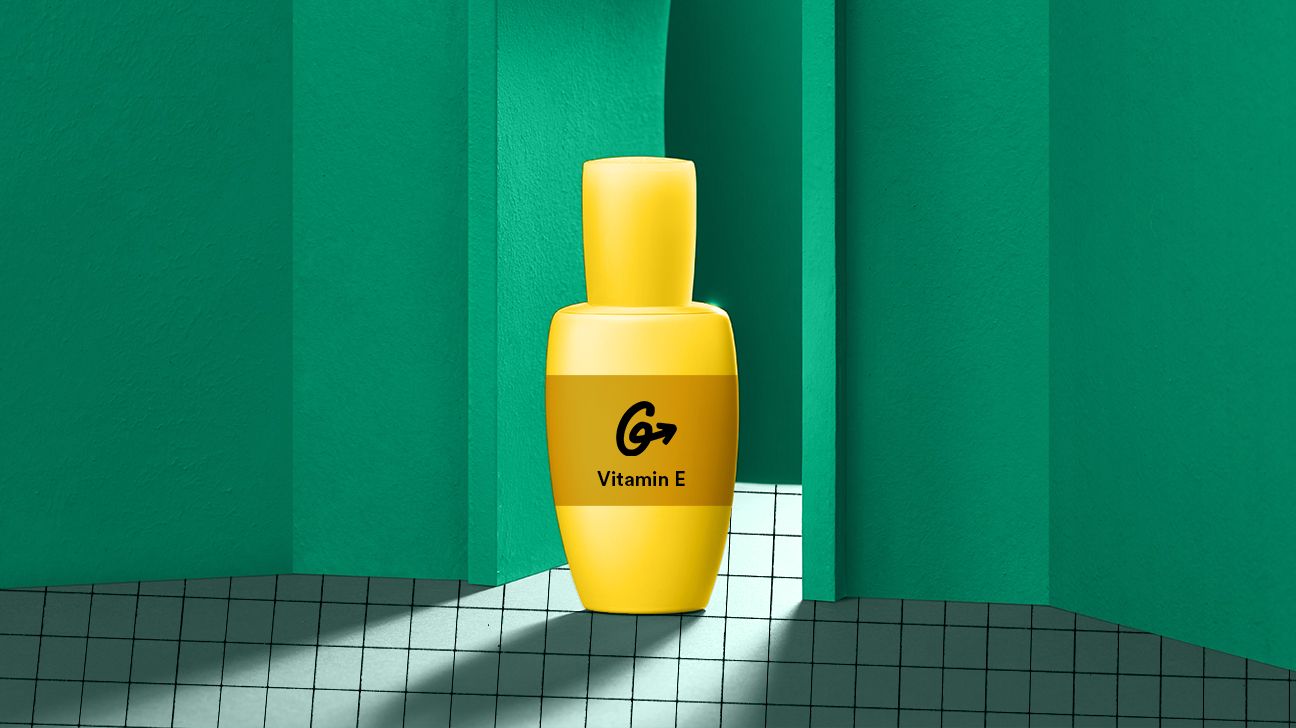Vitamin E. You’ve probably seen it added to skin care products before, and you may even have some in your bathroom right now. But have you ever wondered why it’s such a common addition to skin care products? (Hint: It’s magic.)
Here’s why it deserves to be an E-ssential part of your skin care routine.
In addition to its role as an essential vitamin that helps regulate immune function, boosts heart and brain health, and maintains your vision, vitamin E is a powerful antioxidant.
It scours the body for unstable, harmful compounds called free radicals and donates an electron to them — so they’ll stabilize and chill TF out. This can help keep those free radicals from damaging your cells. In doing so, vitamin E can also decrease inflammation.
On your skin, this can translate to decreased redness, a brighter and more even complexion, clearer pores, fewer signs of aging, improved appearance of scars and stretch marks, and less itchiness.
And if that’s not enough, it can also absorb harmful ultraviolet (UV) rays, keeping them from prematurely aging and damaging your skin.
Um… sign us up!
Vitamin E is a vital fat-soluble nutrient. Most people need to get about 15 milligrams per day through diet, which is actually pretty easy to do.
Some food sources of vitamin E include:
- Oils: wheat germ oil, sunflower oil, corn oil, soybean oil
- Nuts and seeds: peanuts, almonds, hazelnuts, peanut butter, almond butter, sunflower seeds
- Fruits and vegetables: spinach, broccoli, kiwi, mangoes, tomatoes
You can also buy vitamin E supplements, which provide up to 400 milligrams of vitamin E in a single serving — far and above what most people need. In fact, most people have no need for oral vitamin E supplements unless directed by their doctor.
However, there’s also a little bit of evidence to support the use of oral vitamin E supplements for your skin health.
One study found that taking 400 milligrams of vitamin E per day for 4 months improved the symptoms and appearance of atopic dermatitis, an itchy, red, skin rash. But more research is needed before we can say for sure that oral vitamin E supplements help.
For maximum skin benefits, topical vitamin E — or vitamin E applied directly to your skin — is where it’s at. It can work in several different ways to level up your skin health:
- Scars. Study results are mixed, but topical vitamin E may help reduce the appearance of scars.
- Stretch marks. Although vitamin E may not significantly improve the appearance of stretch marks, it may help with the discomfort and itchiness they sometimes cause.
- Sun damage. Topical vitamin E can also absorb UV rays, keeping them from damaging your skin. It could even help mitigate sun damage when applied after sun exposure, but more research is def needed. Don’t skip your sunscreen!
- Dermatitis (dryness, redness, and itchiness). Alone or in combination with other ingredients — like olive oil, vitamin A, and vitamin C — topical vitamin E can improve the inflammation, dryness, redness, and itchiness associated with dermatitis.
There’s less scientific evidence to support the many claims that it can moisturize your skin, improve skin discoloration, and decrease the appearance of wrinkles, but lots of people report these benefits anecdotally.
Vitamin E skin care products often also contain other ingredients that are proven to moisturize and improve wrinkles, like vitamin C and vitamin A.
Topical vitamin E typically comes in two forms: oil or cream. Apply generously and gently massage until it’s absorbed into your skin to reap the benefits.
Product recs: Our picks if you want to try topical vitamin E
- Best oil: JASON Vitamin E Skin Oil
In addition to vitamin E, this oil contains a blend of seven essential oils that may also help improve your skin. It’s formulated specifically to help with fine lines and wrinkles, but packs a serious vitamin E punch that may help with a variety of skin needs. Best of all, it’s free of any iffy ingredients. - Best cream: Derma-E Vitamin E Cream
This light, hydrating, and brightening cream is rich in vitamin E and contains several other skin-boosting ingredients, like vitamin A, vitamin C, licorice root, milk thistle, and ginseng. This brand also contains higher-quality, less harmful ingredients than similar creams.
Unfortunately, vitamin E — especially when taken orally — is not without its risks.
Since it’s fat-soluble, it’s actually stored in your fat cells, which means it’s hard for your body to get rid of any excess. Long term overuse of vitamin E supplements can lead to a vitamin E overdose, which can cause blood clotting problems and increase your risk of stroke. Yikes.
The Upper Limit (UL) of vitamin E — or the max you can take daily without experiencing some gnarly side effects — is 1,000 milligrams, but most people don’t need nearly this much.
On the other hand, topical vitamin E presents a much lower risk. Though some people may experience some dryness or itching as a side effect of topical vitamin E creams or oils.
Oral vitamin E may also interact with certain meds. If you’re taking blood thinners, cholesterol meds, or cancer drugs, be sure to talk to your doctor before adding these supplements to your routine.
tl;dr
- Vitamin E is an antioxidant that may really benefit your skin.
- It’s found naturally in oils, nuts and seeds, and fruits and vegetables.
- Oral vitamin E supplements may help with dermatitis.
- Topical vitamin E supplements may help with scars, stretch marks, sun damage, and dry, itchy, inflamed skin.
- Don’t overdo it on the vitamin E supplements, and make sure to chat with your doctor before taking a vitamin E supplement if you’re also on a drug it may interact with.


